Kuwait owns and manages approximately five thousand gas stations across Europe. Under the not-so-subtle company name ‘Q8’, these stations began as an investment to secure a market for the country’s oil export, but their role continued to grow as they became a key player in funding and lobbying against the occupation of Kuwait prior to the Gulf War. Q8 is not simply a series of serving stations across the European landscape, but a road map for the nation’s political and economic autonomy.
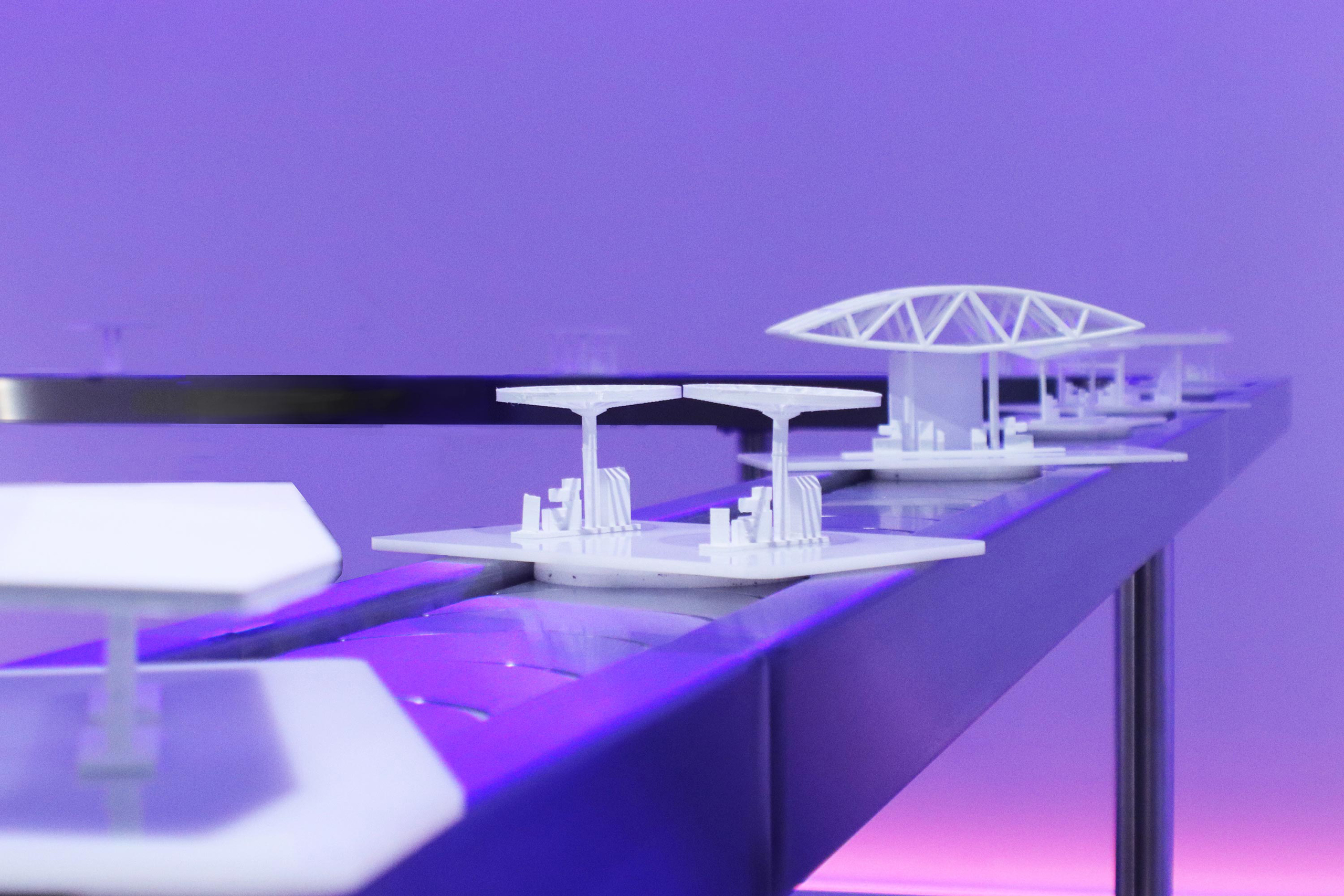
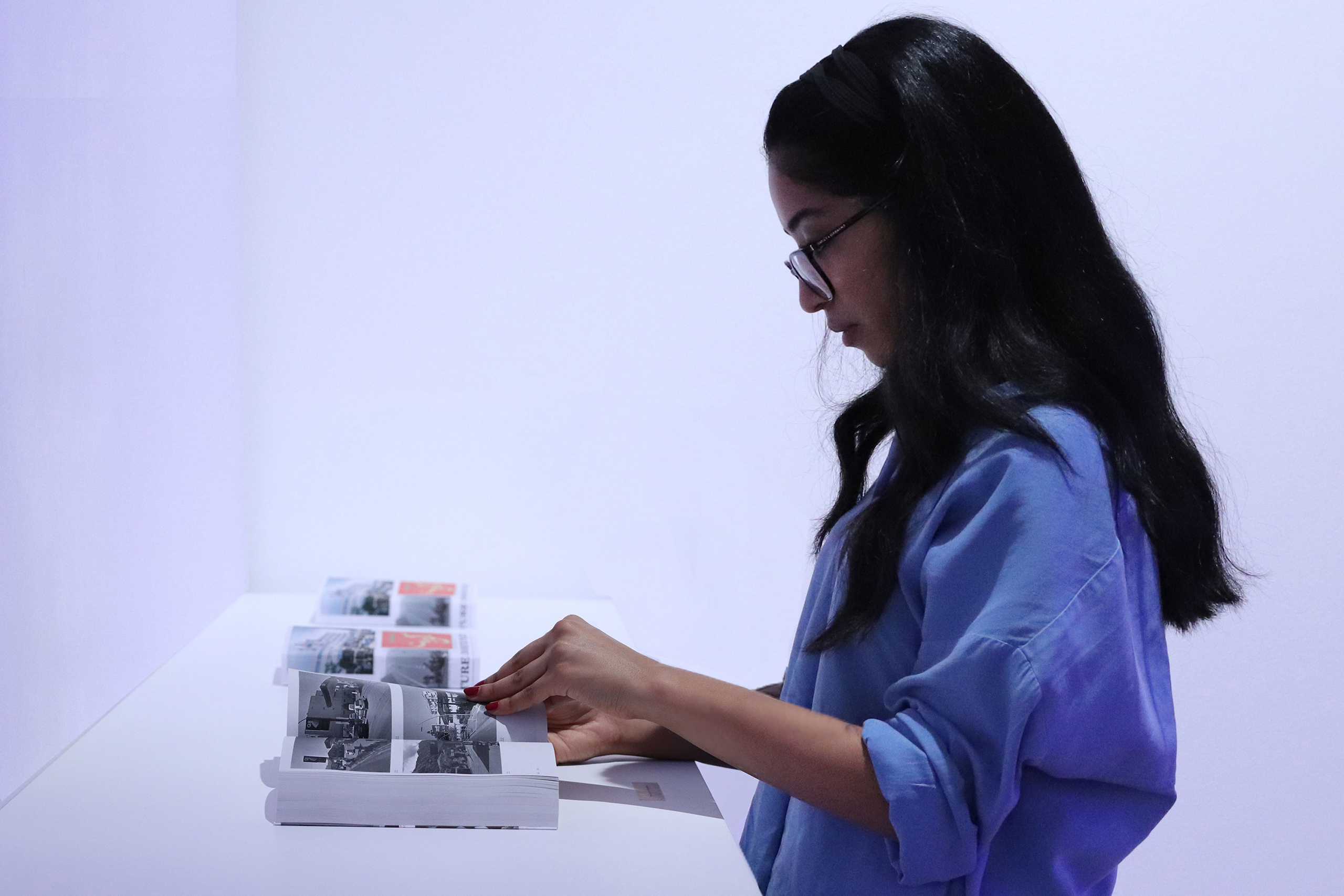
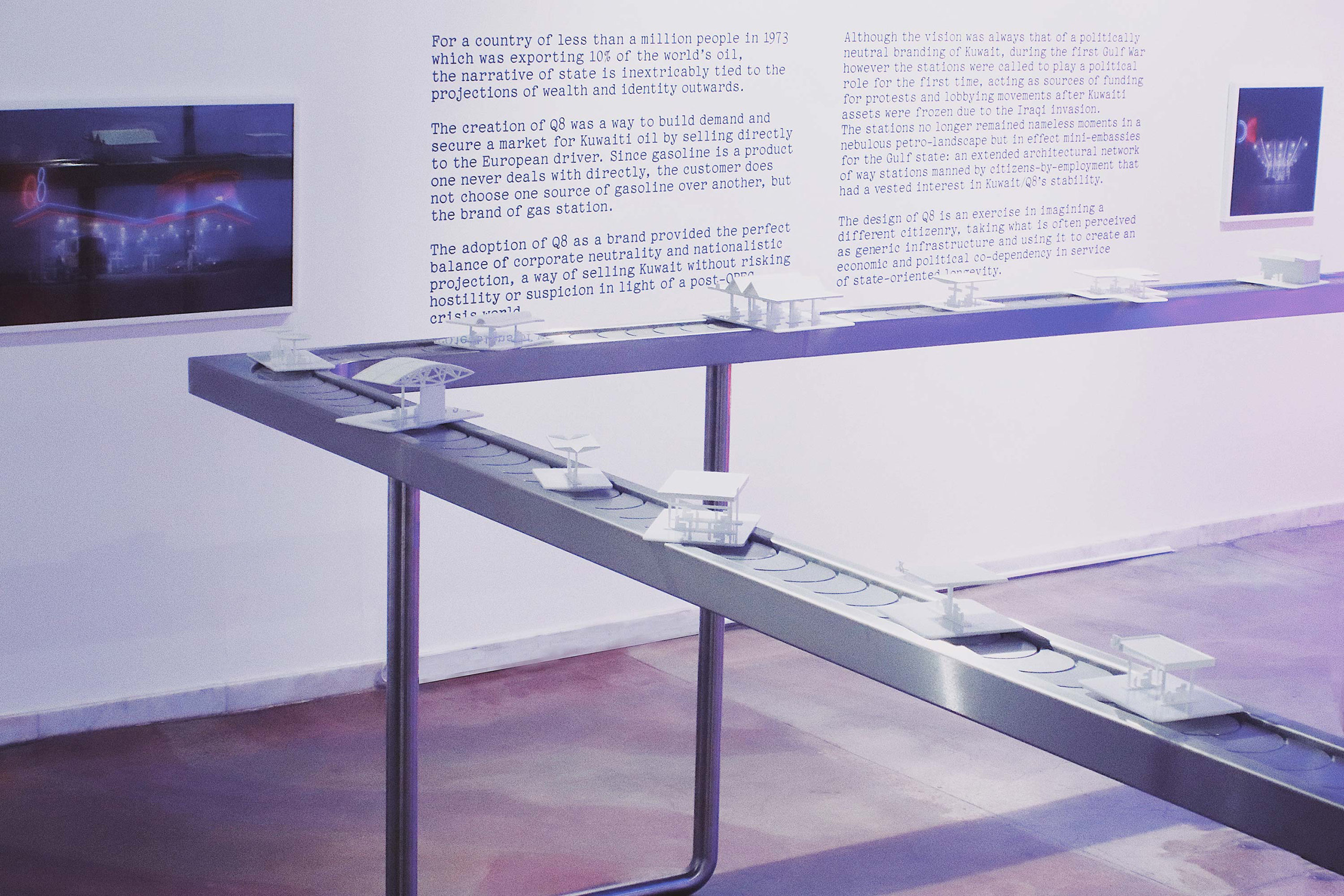
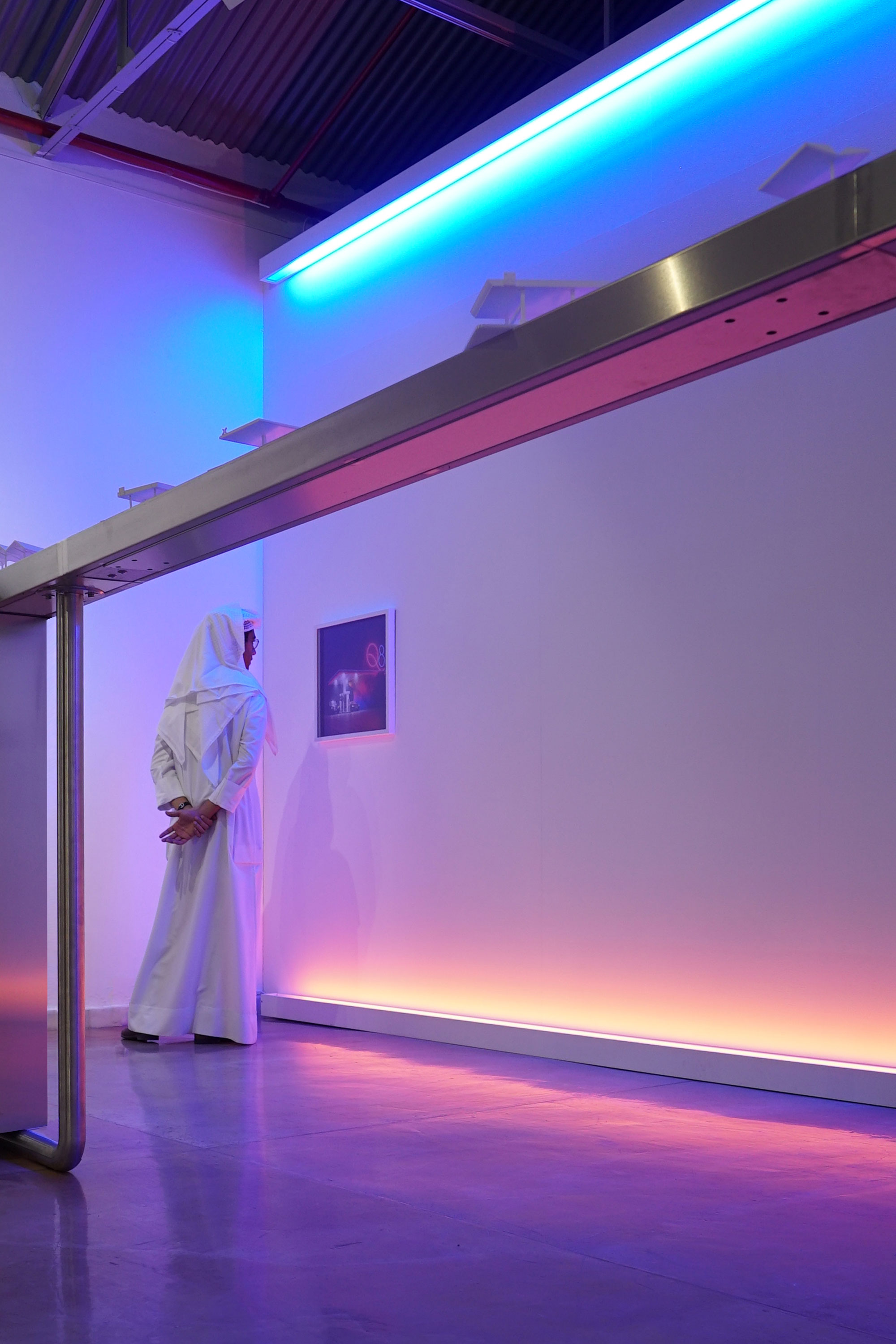
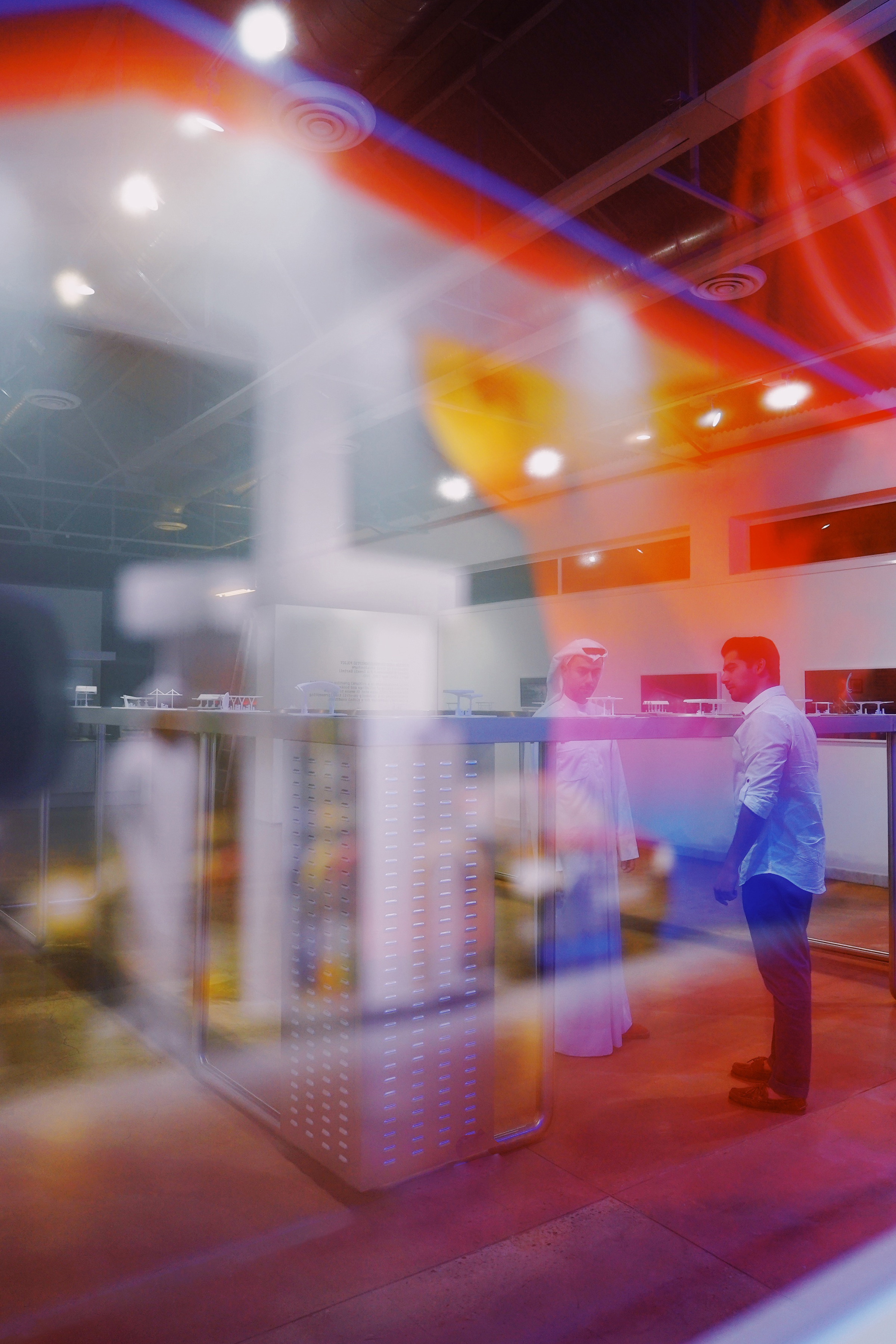

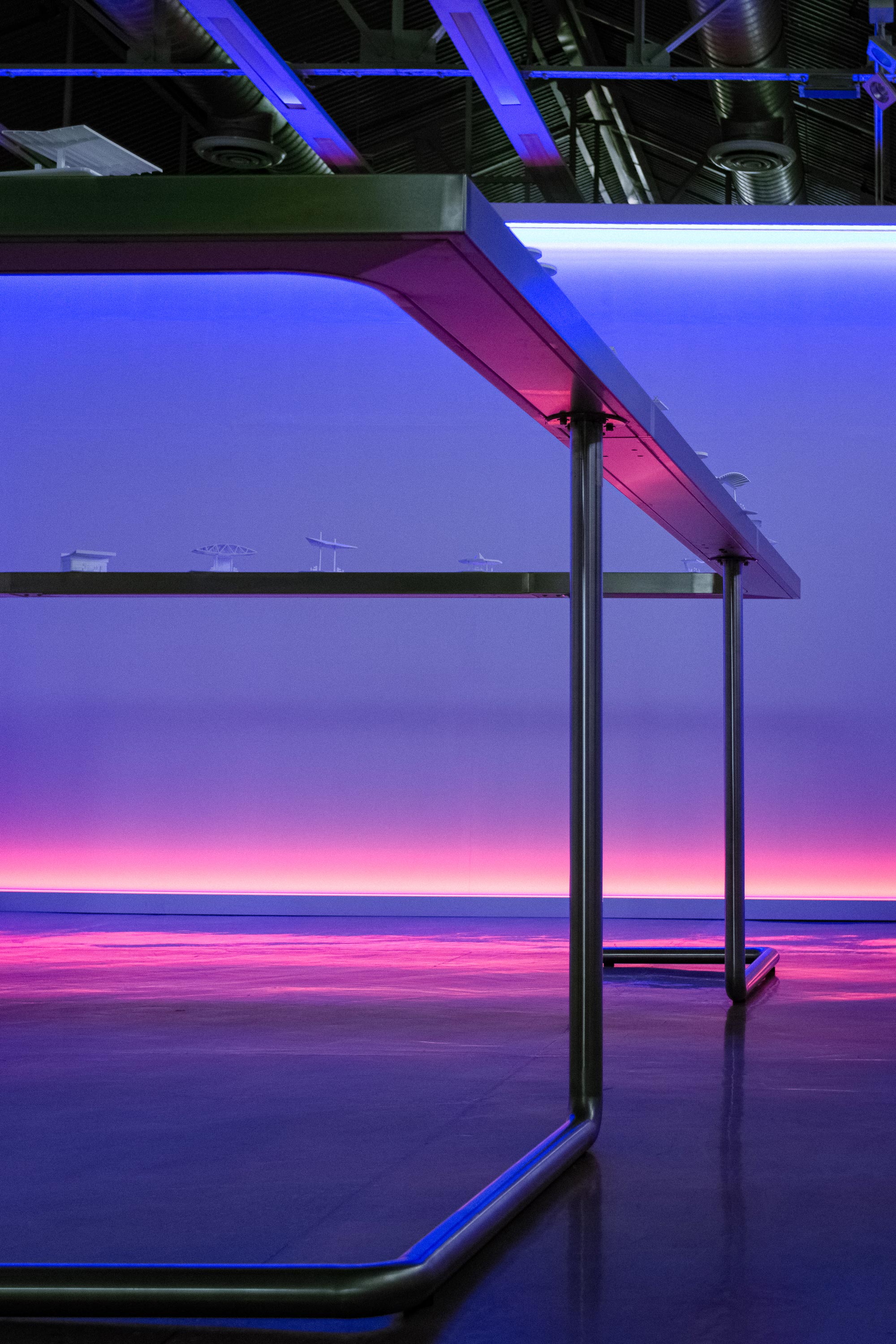

For a country of less than a million people in 1973 which was exporting 10% of the world’s oil, the narrative of state is inextricably tied to the projections of wealth and identity outwards. The adoption of Q8 as a brand provided the perfect balance of corporate neutrality and nationalistic projection, a way of selling Kuwait without risking hostility or suspicion in light of a post-OPEC crisis world. Although the vision was always that of a politically neutral branding of Kuwait, during the first Gulf War however, the stations were called to play a political role for the first time, acting as a source of funding for protests and lobbying movements for the liberation of the country. The stations then no longer remained nameless moments in a nebulous petro-landscape but in effect mini-embassies for the Gulf state: an extended architectural network of way stations manned by citizens-by-employment that had a vested interest in Kuwait / Q8’s stability. The design of Q8 is an exercise in imagining a different citizenry, taking what is often perceived as generic infrastructure and using it to create an economic and political co-dependency in service of state-oriented longevity.
DESIGN:
CIVIL ARCHITECTURE - HAMED BUKHAMSEEN & ALI ISMAIL KARIMI
RESEARCH TEAM:
RANA AJRAWI, HALAH ALESSA, LATIFA ALESSA
PHOTOGRAPHY:
HOUSSAM FLAYHAN, AZIZ MUTAWA
CATALOGUE + GRAPHIC DESIGN:
STUDIO LOB (JANNIS ZELL + PHIL ZUMBRUCH)
LOCATION:
SULTAN GALLERY, KUWAIT + SEOUL BIENNALE FOR ACHITECTURE AND URBANISM, SOUTH KOREA
YEAR:
2019